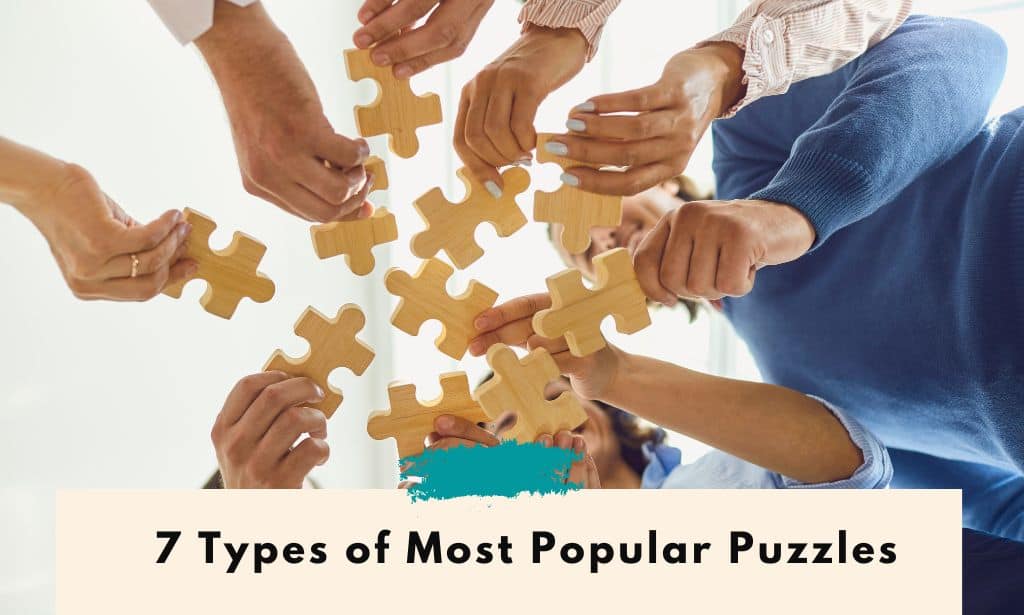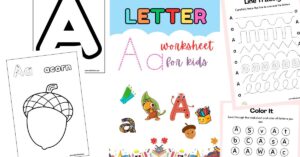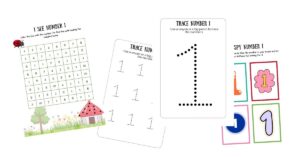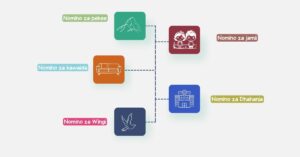Puzzles have been a cherished pastime for generations, challenging our minds and providing hours of entertainment. With so many types of puzzles available, it is hard to tell which one is the most common.
From jigsaw puzzles to crosswords, Soduku, riddles, and more, each has its unique appeal and is more popular in different places and with different age groups. But what is it about puzzles that keeps us coming back for more? Here’s a look at 7 types of puzzles to show you why they have remained so popular.
Before we can rank the types of most popular puzzles, we need to define what a puzzle is. Simply put, a puzzle is any game, toy or problem that tests your knowledge or ingenuity. The goal is to either solve a problem, put pieces together or take them apart logically so you arrive at the correct solution of the puzzle.
Puzzles are grouped into 4 groups, namely logic, word, mechanical and other puzzles. However, each category consists of a ton of puzzle types, and some even belong to more than one group. To help you select the most suitable option for you and your family, here’s a look at the 7 types of popular puzzles.

- What Is The Most Common Type Of Puzzle?
- 1. Jigsaw Puzzles: The Most Popular Type Of Puzzle
- 2. Crossword Puzzles: A Fun Vocabulary Challenge
- 3. Sudoku: The Number Puzzle That Exercises Your Mind
- 4. Word Search: Finding Hidden Words Is Rewarding
- 5. Mazes and Labyrinths: Twisting and Turning to the End
- 6. Picture Puzzles and Optical Illusions: Puzzles That Trick Your Eyes
- 7. Cryptograms: Take your pattern recognition a notch higher
- Puzzles Ranked Per Age Group
What Is The Most Common Type Of Puzzle?
1. Jigsaw Puzzles: The Most Popular Type Of Puzzle
Jigsaw puzzles are a classic type of puzzle that involves combining pieces to create a picture or scene. They come in all shapes and sizes—from the traditional wooden jigsaws to the more modern 3D cardboard versions.
To complete these puzzles, you fit precisely cut pieces together to form a complete image or scene. These puzzles also come in various difficulty levels, from beginner to expert. Depending on the difficulty level, solving one of these puzzles can take anywhere from minutes to hours or even days!
The benefits they offer beyond entertainment make jigsaw puzzles such a popular pastime. They help enhance cognitive skills such as spatial reasoning, pattern recognition and problem-solving.
Putting together a jigsaw puzzle requires your child to identify unique pieces, colors and patterns and then find their correct position in relation to the overall image or scene. This process stimulates the brain and enhances their visual perception skills.
Jigsaws are also great ways to unwind and relax, offering a form of focused and immersive activity that helps reduce anxiety and stress. Even when solving a jigsaw puzzle yourself, the process is therapeutic and meditative. Working on it with family or friends fosters teamwork, collaboration and communication. This creates a great opportunity to bond, have meaningful conversations and share a sense of accomplishment when you complete the puzzle.
Finding the right puzzle for your family is easy; you can find them at any toy store or online retailer with age-appropriate themes and difficulty. So whether you are a casual puzzler or an advanced one—or both!—you’ll be sure to find something that appeals to each family member.

2. Crossword Puzzles: A Fun Vocabulary Challenge
Crossword puzzles have existed since the early 1900s and are still widely enjoyed in newspapers, puzzle books, and online platforms. They are a form of word puzzle that utilizes a black and white square grid, where clues lead to words written across and down the grid.
The white squares are the main focus, as they are the spaces where the answers are filled. The goal is to complete the puzzle by correctly filling all the white squares with words that intersect horizontally and vertically, creating a cohesive grid of interlocking words.
Crossword puzzles might seem intimidating, but they are quite simple—all you need to do is fill in the blank squares with the correct words. The challenge lies in figuring out what those words might be by solving the accompanying clues.
Each white square is assigned a number corresponding to a clue, which provides hints or definitions for the word to be filled in. Depending on the puzzle’s difficulty, these clues can range from straightforward definitions to wordplay, puns, anagrams, or cryptic clues.
One significant perk of crossword puzzles is their potential to enhance your child’s vocabulary, spelling, and general knowledge. By engaging with a wide range of topics and themes, they are exposed to a diverse array of words and concepts. They require a mix of recall and problem-solving skills, encouraging kids to stimulate their minds and expand their vocabulary as they encounter unfamiliar or less commonly used words.
Solving crossword puzzles exercises cognitive skills such as word association, pattern recognition, deductive reasoning, and memory retrieval. Filling in the grid encourages analytical thinking and boosts mental agility. Additionally, solving the puzzle offers a sense of achievement and satisfaction, especially when it’s challenging.
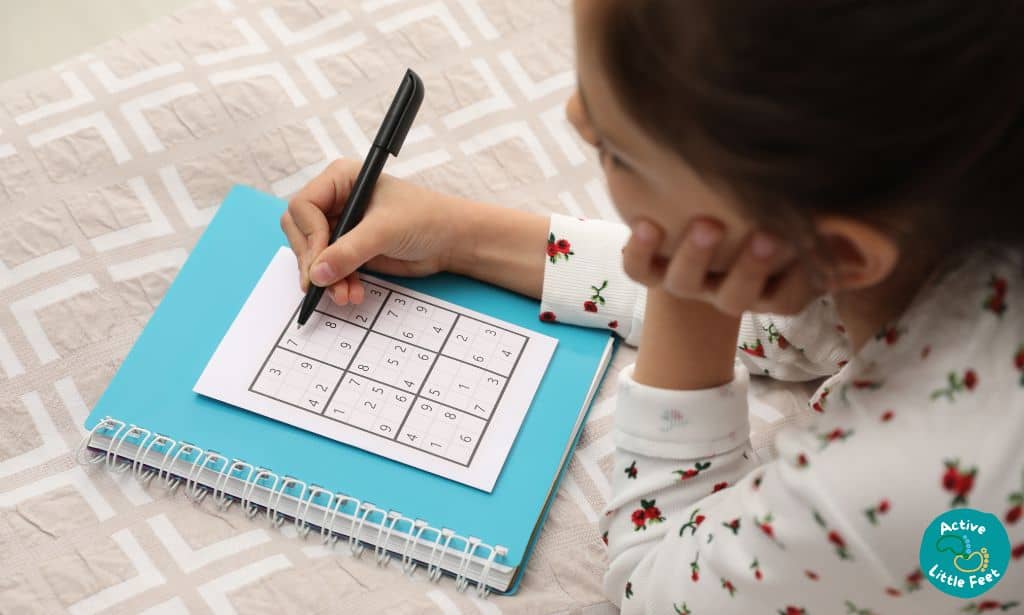
3. Sudoku: The Number Puzzle That Exercises Your Mind
If you’re fans of number play or math, then Sudoku is the way to go. If you haven’t heard of it yet, this is a number-based logic puzzle that originated in Switzerland in the late 18th century. However, it gained widespread recognition in the late 20th century when it was published in Japanese puzzle magazines. Since then, Sudoku has become a staple in newspapers, puzzle books, and online platforms.
The traditional Sudoku grid consists of a 9×9 square split into 9 smaller 3×3 squares. The goal is to fill each cell with a number from 1 to 9, confirming that each row, column, and 3×3 mini square has all the numbers (1-9) without repetition. The puzzle usually begins with some numbers already filled in as clues, and your job is to deduce the correct placement of the remaining numbers.
Sudoku is famous for many reasons. It’s fun and helps exercise your brain, and research shows that solving puzzles like Sudoku can help improve problem-solving skills and mental flexibility. It’s great for adults and kids alike and surprisingly easy to learn. Even if you only know the basics, you can pick up a sudoku puzzle book and start solving the puzzles. They come in different difficulty levels, so there’s something for everyone!
Another plus is it doesn’t require any special equipment; with a pen or pencil, you are good to go. And since puzzles never change once they’re published, no two players are ever working on the same puzzle—you can even compare answers at the end!

4. Word Search: Finding Hidden Words Is Rewarding
Word search puzzles are another form of word puzzle that involve finding words hidden in a grid of letters. The grid for a word search puzzle consists of a rectangular or square arrangement of letters.
The words to be found are listed alongside the grid and can be positioned horizontally, vertically, diagonally, and even in reverse order. The challenge lies in locating the words amidst a sea of other letters, as they can be hidden in any direction and may overlap.
Word search puzzles are known for their versatility and flexibility. You can customize them to suit different themes and subjects, ranging from everyday vocabulary and common phrases to specialized topics such as types of animals, sports, geography, or even pop culture references. This adaptability allows word search puzzles to cater to many interests and educational purposes.
Word search puzzles offer more than just entertainment. They are a useful tool for improving vocabulary, spelling, and language skills. As kids search and identify words, they reinforce their familiarity with word patterns, letter combinations, and spelling rules.
These puzzles can also serve as an educational tool for language learning or as a fun way to reinforce specific subject-related terminology.

5. Mazes and Labyrinths: Twisting and Turning to the End
Maze and labyrinth puzzles are probably the most iconic type of puzzles. They involve navigating through a complex network of paths, walls, dead ends, and twists to find the goal or the exit. Maze or Labyrinth puzzles come in various forms and difficulty levels, catering to different age groups and skill levels.
Their designs range from simple paths on paper to elaborate 3D structures or virtual mazes you can play on your devices. In any form, the objective remains to find the correct path from the starting point to the desired endpoint.
Maze puzzles require a combination of spatial reasoning, problem-solving, and logical thinking. You must analyze the maze’s layout, evaluate potential paths, and make decisions to navigate it effectively.
Solving maze puzzles offers several cognitive benefits, such as increased spatial awareness and visual perception, as you must mentally map and manipulate the maze layout in your mind to solve it. Maze puzzles also promote critical thinking skills as you analyze and evaluate multiple options, anticipate consequences, and make strategic decisions to progress through the maze successfully.
No matter the difficulty level, mazes are always fun to solve. They’re also a great way to get some quality family time, as solving them together encourages teamwork, communication skills and creativity while having a great time! Even better, you can make your own mazes by drawing them or printing out templates found online.

6. Picture Puzzles and Optical Illusions: Puzzles That Trick Your Eyes
Picture puzzles and optical illusions are popular puzzles that challenge your brain by playing with your perception and ability to interpret images correctly. These types of puzzles cleverly manipulate shapes, colors, and patterns to create visual effects that can be deceptive or intriguing.
Picture puzzles break up an image into smaller pieces, and you must correctly combine them to create the whole image. They sound a lot like jigsaw puzzles, but unlike the latter, the image is divided into several smaller sections known as tiles rather than typical jigsaw pieces. They come in various forms and formats, including hidden object puzzles, spot-the-difference puzzles, and rebus puzzles.
Hidden object puzzles present a picture filled with various objects or elements; the challenge is finding specific items listed within the image. Spot-the-difference puzzles feature two nearly identical images, and the goal is to identify the subtle differences in the images.
Rebus puzzles use pictures, symbols, or letters to represent words or phrases, requiring you to decipher the hidden message. A good example of the 4 Pics 1 Word game.
Optical illusions, contrarily, are visuals that deceive the eye and brain to see something that is not there or perceive it differently from what it is in reality. These illusions exploit how your visual system processes information, playing with concepts such as perspective, contrast, motion, and depth perception.
A common optical illusion is an ambiguous figure, which presents an image that you can interpret in multiple ways, depending on how your brain processes the visual information. An example is the “Necker cube” illusion, which you can perceive as a cube that flips between different orientations.
7. Cryptograms: Take your pattern recognition a notch higher
If you’re looking for an activity that brings the family together while sharpening everyone’s mental acuity, then cryptograms could be the fix you are looking for. A cryptogram is a puzzle whose goal is to decode an encrypted message.
They involve transforming a given text, usually a quote, proverb, or phrase, into a secret code by substituting each letter with another letter or symbol according to a specific cipher or encryption method.
The encrypted message, or ciphertext, appears as a series of symbols, numbers, or seemingly random characters. Your task is deciphering the code and revealing the original message by figuring out the correct letter-to-letter correspondence.
Cryptograms are also an excellent way to sharpen your logic skills and boost problem-solving abilities. They require analytical thinking, linguistic skills, and perseverance to crack the code and reveal the hidden message.
As you gain experience and practice with cryptograms, you improve your pattern recognition abilities, develop strategies for deciphering codes more efficiently, and enhance your understanding of different encryption methods. Start out slowly with easy puzzles and work up to solving harder ones as you get better and learn to think outside the box.
Puzzles Ranked Per Age Group
Here’s a simple ranking of these puzzle types per age group, and the difficulty increases as you get older. This will help you in picking something that appeals to everyone.
For kids
- Jigsaw puzzles
- Maze puzzles
- Word search puzzles
- Crossword puzzles
For teenagers
- Sudoku
- Crossword puzzles
- Logic puzzles
- Cryptograms
For adults
- Crossword puzzles
- Sudoku
- Logic puzzles
- Cryptograms
- Jigsaw puzzles
The puzzle you select depends on your family’s interests, but there’s no doubt they are a great way to get people of all ages thinking, laughing, and having fun together. Whether you want to challenge your family’s brain power or just have fun, there is a puzzle for everyone. So why not try out a new puzzle today and see if it’s your new family’s new favorite?

